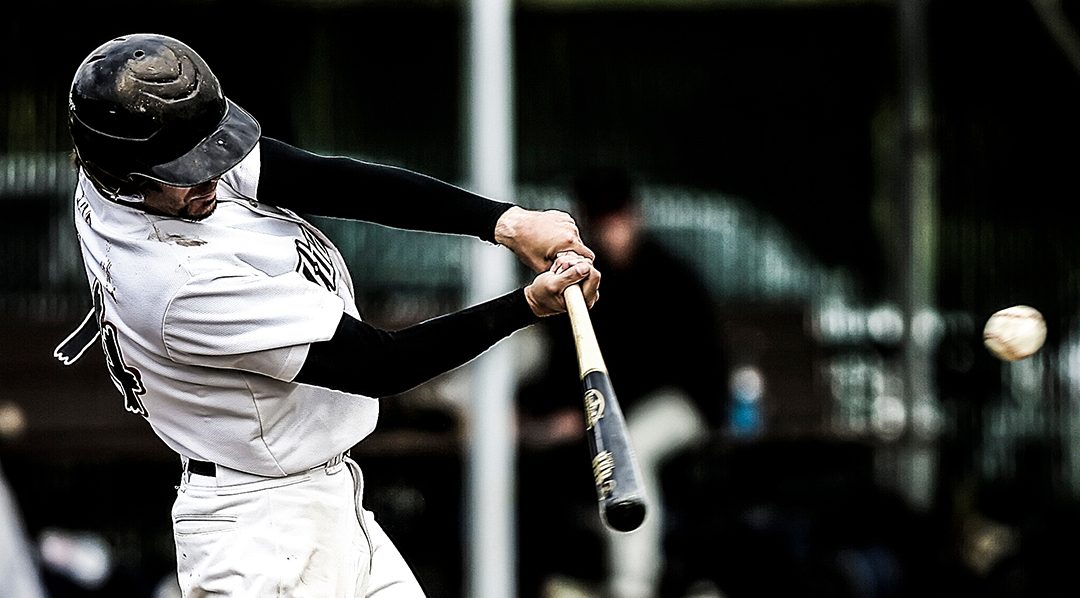The MLB Network aired its “Baseball Combine” in late June. The showcase was dominated by prospect performance in the 30-yard dash, standing broad jump, vertical leap, push-ups, etc. When evaluating hitters, numbers charting exit velocity, launch angle, and distance were featured.
Somewhere off-camera, it’s likely those position players were also having their vision tested. An eye exam is not as sexy as showcasing strength and explosiveness, but the future success of those hitters – at the high school, college, or professional levels – is dependent on passing that vision test. Because without good eyesight, those other physical assets will go dark when it comes to hitting good pitching.
The average person with 20/20 vision has good eyesight. Most professional athletes have 20/15 vision. MLB players have an average visual acuity of 20/13. Arguably the greatest hitter of all time – Ted Williams – had 20/10 vision.
Hitters and parents of hitters, the benefits of hitting instruction, strength and conditioning, or speed and agility training are valid. But it would be wise to mix in an eye check and/or to consider vision training. Eyesight can be improved medically or through specified training and have an immediate, positive impact.
Good eyesight trumps strength, bat speed, or launch angle on the hitting priority list. Let’s break down why.
Four tenths of a second
It takes four tenths (.4) of a second for a baseball thrown at 90-mph to travel from the pitcher’s hand to the catcher’s glove. That time is neatly split into two parts. The batter has two tenths (.2) of a second to recognize the pitch type, speed, and location. If the decision is made to swing the bat, it takes two tenths (.2) of a second to physically swing the bat.
HALF of hitting is devoted to seeing the pitch. But do we discuss it? Are we allotting practice time to improve vision – or equally important – identifying it as cause for why some hitters start to struggle against better pitching?
It’s a hitting topic that is rarely addressed. Currently, we’re moving in the opposite direction of how we assess hitting. We’re focusing more on the results that occur after contact – launch angle, exit velo, distance.
Better vision = Better decision-making
The eyes serve as messenger to the brain as the pitch is delivered. When the eyes deliver poor messaging, the hitter – regardless of strength, bat speed, and broad jump results – will struggle to perform consistently. Let’s review the process of what the eyes need to do on each pitch.
- Soft focus – As the pitcher begins their windup, the eyes of the hitter are in “soft focus.” They’re relaxed and looking at a general area around the pitcher.
- Hard focus – When the pitcher’s arm swings upward, the batter’s eyes shift to a hard focus – locking into the release point area.
- Location and pitch type – The eyes track how the ball comes out of the pitcher’s hand – factoring in wrist position and spin (to identify pitch type), steepness of the incoming pitch (vertical strike zone), and its direction (lateral strike zone).
- Speed – Factors to gauge speed include a) spin; b) how long the ball takes to get to the midway point; and/or c) an inexperienced pitcher altering their delivery and tipping the pitch.
- Message – Finally, the eyes tell the brain to either start the swing and where to deliver the barrel, or take the pitch.
All of this transpires in the time it takes you to clap twice – two tenths of a second. If the hitter is proficient during this phase, they have a chance to hit the ball hard. If the message delivered is incorrect (or indecisive), they have little-to-no chance of making solid contact.
Why can’t I hit a breaking pitch?
Most hitters don’t like breaking pitches and it’s easy to understand why. The velocity is less predictable, which disrupts timing and the ball doesn’t travel on a straight path.
Early identification is key to hitting breaking balls. When a breaking pitch is thrown, the eyes must:
- Identify the spin – A ball thrown with forward or side spin immediately tells you the pitch is going to be slower than a fastball and the ball is going to move. The more forward spin (12-to-6 breaking ball), the more downward the movement. The more sidespin (slider/cutter), the more lateral break on the pitch.
- Recalculate what your eyes are telling you – When a pitch starts on a path above the knees over the middle of the plate, your eyes are conditioned to tell your brain to swing. However, if that pitch has forward spin like an overhand breaking ball, the ball will break downward and out of the strike zone. Factoring in the spin with location, the message to the brain should be, “Don’t swing.”
Identifying a breaking pitch and timing it is key, but there’s one final piece to hitting the ball hard. The hitter needs to deliver the barrel to where the ball is going to be, not where they originally see it. Easy to say, but very hard to do because it’s counter-intuitive. It’s why so many breaking pitches are missed or hit on the ground. The hitter delivers the barrel to the pitch’s original location, not where it will be when it crosses home plate.
A short swing extends your time
Coaches and hitting instructors often preach the importance of a short, compact swing or being “direct to the ball.” Have you ever asked why?
A short swing takes less time to execute. This increases the time a hitter has to identify the pitch type, location, etc. They gain time on the first two tenths (.2) of a second. If the batter is afforded extra fractions of a second to determine if, when, and where they’re going to swing, their decision-making and execution will improve. They’ll be better hitters, #MikeTrout.
Hitters with long swings need to make their decision earlier to get the barrel to the ball in time. This is a distinct disadvantage. It doesn’t mean you can’t hit the ball with a long swing, but you’ll likely be fooled more often and swing at pitches out of the strike zone. These hitters are labeled “undisciplined,” but they simply may have poor eyesight.
Bat speed is beneficial for the same reason. The less time it takes your barrel to get to and through the hitting zone, the more time you can gauge the pitch. Good bat speed also increases exit velocity and power, so it’s advantageous to the hitter before and after contact.
So don’t underestimate the importance of vision, particularly at advanced levels of play. Have the eyes checked annually and consider vision training drills. A simple google search will provide you with a number of options.

